Our extra-large special edition is here. Subscribe today and receive the 25% longer issue at no extra cost!
Looking Back At TT Games’ Lego Legacy
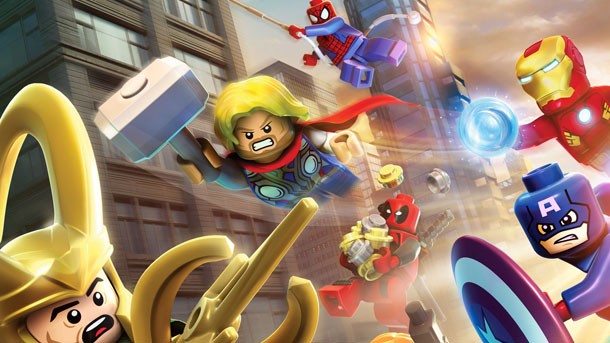
Talk to anyone at TT Games, and it’s impossible to overlook the enthusiasm they still carry for the Lego games. Rather than looking at each installment as yet another bullet point on a resume, the team approaches each game as a new challenge. While some critical elements have been there from the beginning – co-op, large character rosters, showers of collectible studs – the team has expanded on that framework with each iteration. Those creative opportunities aren’t lost on Jonathan Smith, head of production at the studio.
“We are so lucky to have all that variety and that always stimulates new ideas,” he told us. “At the same time, just as a matter of principle, we have to move on with each game. We’ve got new platforms coming which give us new capabilities on the technology front as well. Together those enable us to keep things fresh each time, because if we’re not doing that then we’re wasting not only our time but the player’s time and not only that, but even worse, children’s time, which is absolutely unforgivable.”
Smith took the time to walk us through the Lego series’ highlights, providing some insight on what kinds of new gameplay twists each one added, and a glimpse at the development process.
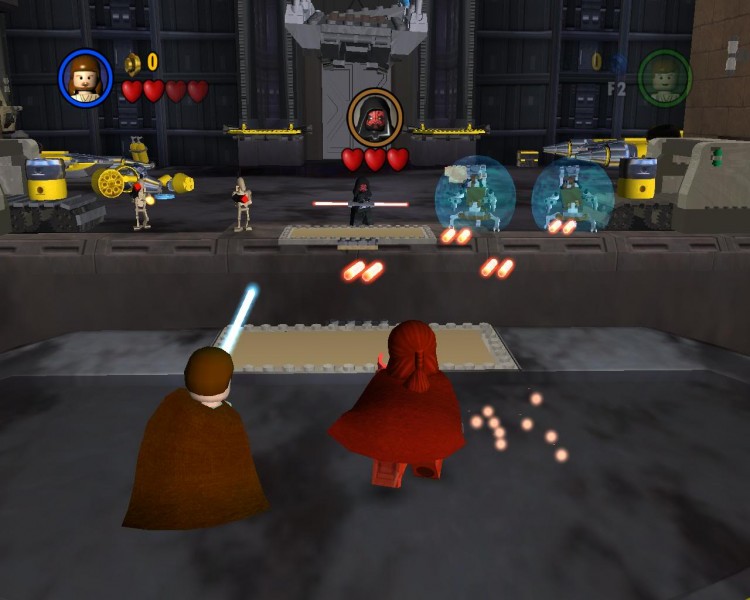
Lego Star Wars: The Video Game
“Lego Star Wars, the first one, that’s where it all began,” Smith says somewhat wistfully. The first game was not only notable for kicking off what would be a long partnership with the Lego Group, but for its ambitious approach to the license. Lucasfilm let TT Games tackle three films in one game; it allowed the studio to release a game chock-full of Episode III spoilers two months before it hit theaters.
“Not only did we bring the co-op experience to that game, but also the free-play concept, framework, and design, and how it gives you great depth at the time.” Smith adds that it was critical from the outset that players were given the chance to experiment and fool around without being penalized.
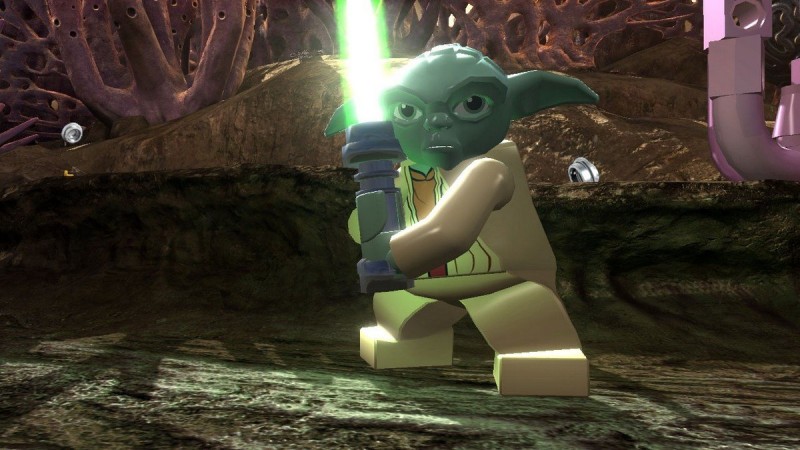
Lego Star Wars II: The Original Trilogy
Following the success of the first Lego Star Wars game, TT Games took on the classic trilogy. Smith says the team’s familiarity with the source material (as well as taking a second pass on the budding Lego-game skeleton) made it easier to improve on the first game.
“We were really on secure ground with the classic trilogy movies that everyone on the team knew intimately,” Smith says. “We had such affection for it, and that comes across in the storytelling scenes and the character animations as well. We had iconic scenes to play with on the level design. I think we also started to get a sense of how far we could push the dramatic experience in a Lego game. If you look back at Lego Star Wars 1, there’s lots that’s really nice and cute about it, but with Lego Star Wars 2 we have Hoth as a level and you get into an AT-ST and you stomp around in it. That was the moment that certainly on the team we realized that the game experience in a Lego game can be about much more than running around as a minifigure and being in a minifigure level in a world full of minifigures. You can trace a lineage from there through other big characters, big bosses, right up to some of the just incredible, overwhelming spectacle that there is in Lego Lord of the Rings.”
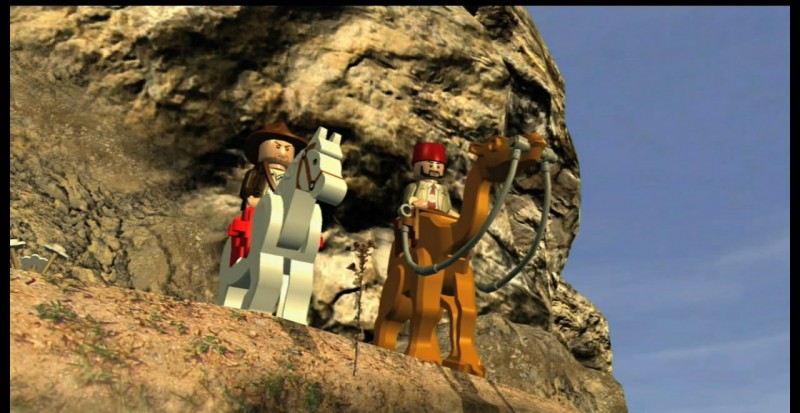
Lego Indiana Jones: The Original Adventures
Indiana Jones and Star Wars don’t have much in common, aside from Harrison Ford. TT Games took that into consideration when developing Lego Indiana Jones.
“[In Lego Indiana Jones] you can see a different flavor in the gameplay, with not only action and fighting, but also more puzzle solving,” Smith says. The team quickly realized that the Indiana Jones films had a much smaller selection of potential characters, and little in the way of any obvious heroes, aside from the whip-wielding, fedora-wearing star. “We added more flexibility with what you can do with your character and picking up and swapping weapons, because we knew the story gameplay was always going to be focused primarily on one guy: Indiana Jones. So rather than switching between a broad roster of different characters as we did with the Lego Star Wars games, we needed to make playing with primarily one character fun for Lego Indiana Jones. So it enabled us to do a lot more than the Star Wars characters could, and that’s again a theme we come back to from time to time – though certain universes don’t require it so much.”
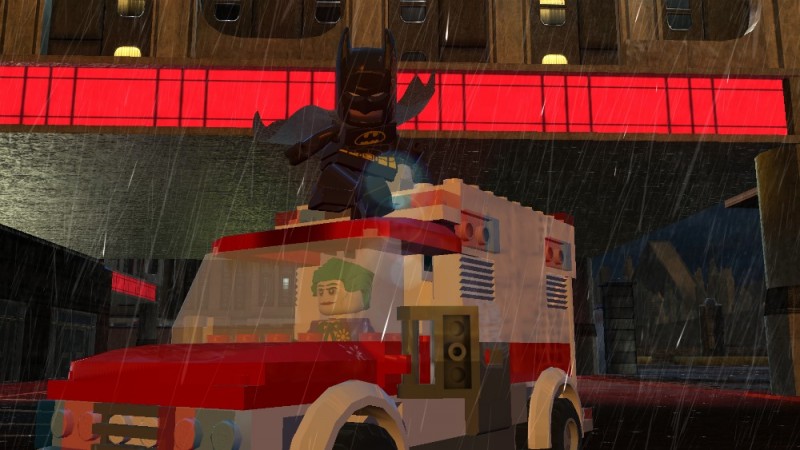
Lego Batman: The Video Game
“We had suits in Lego Batman rather than weapons or something that you could switch between to get that variety of gameplay. That sort of dressing up I think has always been a fun part of the game,” Smith says. Batman’s contemporary setting was a departure from the worlds of Star Wars and Indiana Jones, along with the hero’s gadget-focused approach to combat. It also gave TT Games’ writers a chance to flex their skills. “Lego Batman was our first original story. It also introduced villain mode, which was a whole sort of mirrored reflection of the story through the eyes of the villains with different levels. We really enjoyed that because we have such great villains to play with and to play as in that game. I think a lot of the strength of that game and the appeal of that game, particularly to younger players, which we’ve seen over the years, has to do with how great the characters are and how cool it is to be Batman.” Smith says one of his personal highlights in the game was throwing Batarangs, an activity that he describes as being more fun than it needed to be. Lego Batman also introduced the minifig customizer, which allowed players to mix and match individual parts to make their own characters – such as putting the Joker’s head on Batman’s body.
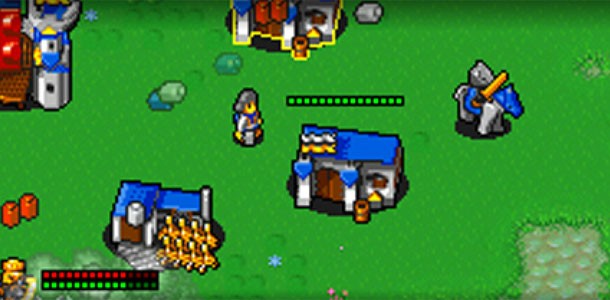
Lego Battles
With Lego Battles, TT Games worked with an outside studio to create a game specifically with the Nintendo DS in mind. Not only was the lack of a specific external license a departure for the team, but it was also more of an RTS than action platformer. “[The game] originated at TT games, and it was developed by the super team at Hellbent Games in Vancouver,” Smith says. “The concept there was while we continue this progression of incredible Lego games on a very big scale based primarily on dramatic movie properties, let’s also explore a different genre on a specific platform and really try to take advantage of the capabilities of that particular individual platform, where we know the children are playing, and that’s the Nintendo DS. We also wanted to make sure we don’t forget about the classic Lego evergreen play worlds of pirates and space and knights and castles. I think we reminded ourselves how cool they were as well as how fun they could be, and the idea of mixing them up and having an RTS game on a handheld where you can fight an army you built comprising of spacemen and orcs and pirate captains on the field of battle, I think was just a really good idea, and the team did a great job of implementing it. Again, that’s a game that has shown some success even though it’s on just a single platform. Like many of our titles, it’s stuck around as an evergreen and continues to sell pretty well, and we’re pleased with that.”
Lego Indiana Jones 2: The Adventure Continues
Lego Indiana Jones 2 added an extra storyline based on the much-maligned Indiana Jones and the Kingdom of the Crystal Skull, but fortunately there was more to it. The game added several innovations that remain to this day. “Up until Indy 2, we had a co-op experience that was still with a single-camera view,” Smith says. “It was with Indy 2 we introduced the ability for the characters to split up from each other in response to a lot of feedback from older brothers restricted by their younger brothers, primarily, and the parents that had to listen to the squabble and intervene from time to time.” Players were no longer tethered to one another, so they had more freedom to explore levels, and levels could be designed with more vertical elements. Smith says he’s most proud of that game’s level builder, which he counts as one of the biggest additions to the games. “For the first time, there’s build your own adventure, where you can spruce up your levels and put together whole new levels that you can share with other people. We had all the content from The Kingdom of the Crystal Skull you could play with, and those amazing hub worlds – one for each of the movies – where you can see from there developing ideas which pay off again and again in Gotham City and the other games in where you see what a world we can create with the story levels coming off it. Right from the start we aspired to do that with Lego Star Wars, but we didn’t have the scope or the capability to deliver that.”
Lego Rock Band
Lego Rock Band was another unexpected direction for the Lego brand. At the time, music games were still hot, and the team was looking for a way to broaden the genre’s audience. It also showcased TT Games’ humor with cutscenes that played during epic song moments, such as dinosaurs chasing the band or a demolition crew blasting a city apart. “Lego Rock Band was our answer to the question, ‘How do we make the music games we really enjoy playing even more fun?’ And the answer to how you make anything more fun is to add Lego,” Smith says. “So a Lego music game would be even more accessible than other games, which means that we would be able to bring in a more forgiving failure gameplay mechanic and in particular for Rock Band I think the ability to turn off the requirement to use the drum pedal when you’re playing drums, which was something very well attuned to our audience. I’ve seen a lot of children really enjoy playing the drums in Lego Rock Band, whereas they found Rock Band drums too hard with their requirement to play on the pedal. We really had a blast making Lego Rock Band.”
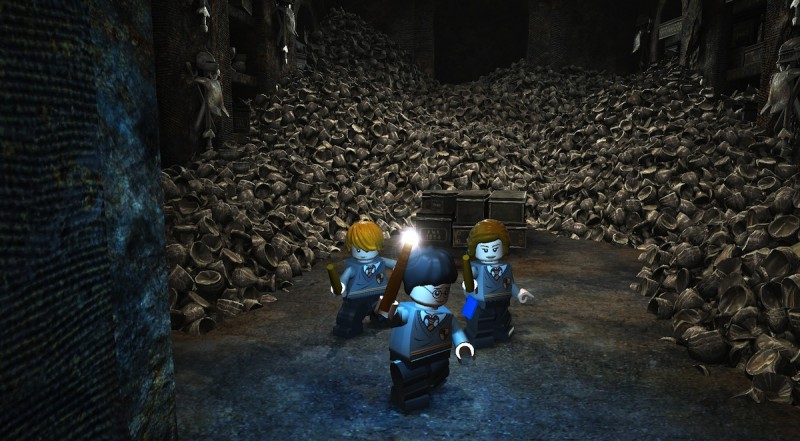
Lego Harry Potter: Years 1-4
Lego Harry Potter built upon Lego Indiana Jones 2’s large hubs, giving players the chance to explore Diagon Alley and Hogwarts. It also incorporated the magic spells that are synonymous with J.K. Rowling’s world, thanks to a new radial menu. “With Harry Potter, obviously we had many people on the team who were big fans of Harry Potter fiction, and I think both Harry Potters Years 1-4 and Years 5-7 exhibit the attention to detail and the love for the source material that we’re proud to be able to say is a trademark of Lego games,” Smith says. “They brought the world of Hogwarts in Years 1-4 and then the magical world outside of Hogwarts as well to life as a game environment that was really immersive to a level that we hadn’t achieved before.”
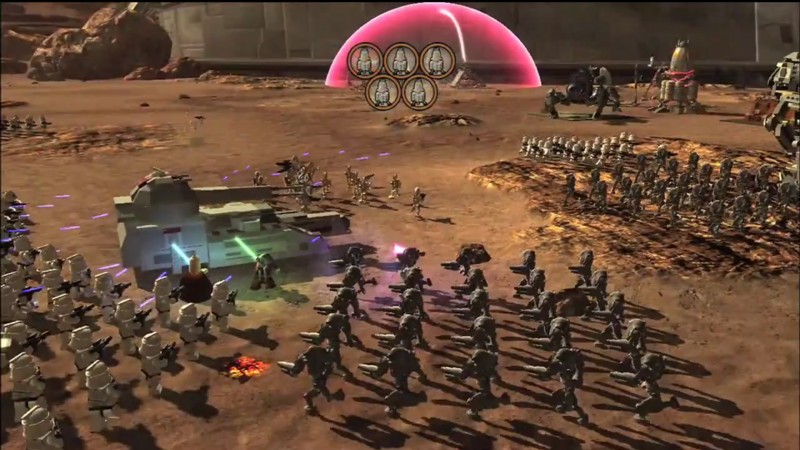
Lego Star Wars III: The Clone Wars
With Lego Star Wars III: The Clone Wars, large-scale battles were the biggest draw. The game incorporated action-RTS elements in these levels, which pitted armies against one another to capture areas and destroy outposts. “You could see your forces of ships, vehicles, and ground forces battle in the most epic way,” Smith says. “That’s on top of all those brilliant-looking, fun story levels with replay depth in the huge, spectacularly explorable hub of the ships in space. Plus, you had all the bonus content with bounty hunter mode and all the good guys and the bad guys that were there to collect. Star Wars III is remarkable in lots of ways.”
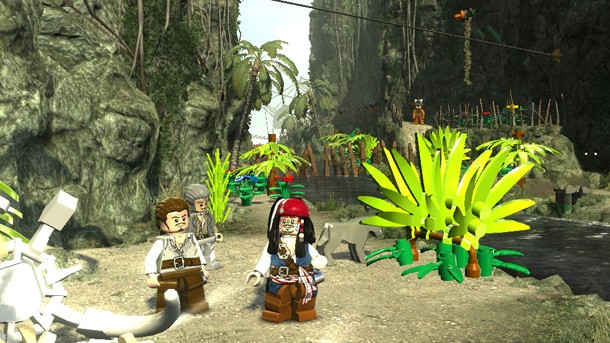
Lego Pirates of the Caribbean: The Video Game
“Lego Pirates of the Caribbean last year was really fun to make,” Smith says. “It’s our funniest game so far. Everyone loves pirates and Pirates of the Caribbean, and from the very first animation of Captain Jack Sparrow we knew that those two things – the world of Lego gaming and the world of Pirates of the Caribbean – were going to fit beautifully together. Because in that Pirates of the Caribbean world there’s the sense of mischief and spectacle and cool characters, but also a sense an awareness of the ridiculous and the outlandish that was really fertile ground for us.”
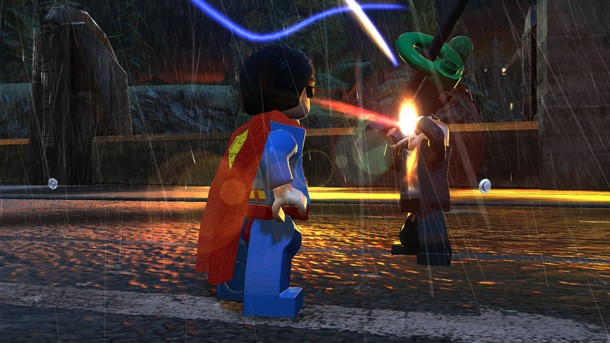
Lego Batman 2: DC Super Heroes
Lego Batman 2: DC Super Heroes broke the sound barrier for TT Games, introducing voice acting to the Lego games. The voice acting allowed TT Games to tackle an all-new story with a level of depth that was previously unattainable through the charming, but limiting, pantomimes that had been a trademark up until then. It was also loaded with some of the biggest names and most memorable locations in all of comics. “It was the first ever Lego talkie, with a wide-open Lego Gotham City where you can fly as Superman in the most incredible way and plummet head first into the ground. We have the Batcave and all of Batman’s cool gadgets and so many different vehicles.”
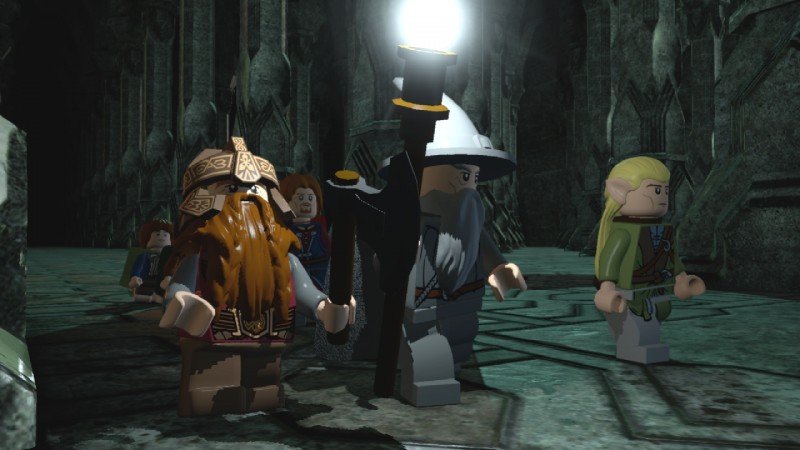
Lego the Lord of the Rings: The Video Game
The most recent release in the Lego series is appropriately TT Games’ largest, most polished game so far. Instead of recording new audio for the game, TT Games used the original voice acting from Peter Jackson’s Lord of the Rings trilogy. “It was this amazing, epic quest, with lots of different characters, each with distinctive abilities that tie into spectacular, exciting movies. In terms of the visuals in Lego Lord of the Rings, it’s not just the quality of the art that works, but the spectacle of it as well. It has the most overwhelming bosses, the armies swooping through the fields, and all the effects – it really is by far our most dramatic game.”
TT Games continues to plug away with Lego games, including the Wii U game Lego City Undercover, Lego Marvel Super Heroes, and the recently announced series of titles based on the new Legends of Chima line of toys. If past games are any indicator, fans can expect to see further tweaks and innovations with each upcoming release. Perhaps Smith sums it up best by saying, “We always try to take steps forward."
For more information on TT Games, Lego Marvel Super Heroes, and more, be sure to check out our hub.

Get the Game Informer Print Edition!
Explore your favorite games in premium print format, delivered to your door.
- 10 issues per year
- Only $4.80 per issue
- Full digital magazine archive access
- Since 1991










